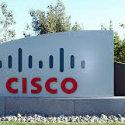Having made its fortunes in hardware, Cisco is now planning to revamp its strategy and plan a future based on software and cloud developments.

Software and cloud capabilities are to be the main strategic focus for Cisco Systems in the years ahead, the networking giant will announce later this month when it unveils details of its new corporate strategy.
In an invite to the media and analyst communities, which Cisco Systems Inc. (Nasdaq: CSCO) will brief ahead of a public announcement planned for late January, the vendor noted that software and the cloud will be "the main focus for the company as we move to a software-based model and place big bets on our transformation in 2015."
The strategy will be presented by Rob Soderbery, senior VP of enterprise products and solutions, and "software czar" John Brigden, senior VP of software strategy and operations.
Naturally, the company isn't providing any details of its strategy in advance, so ahead of the public announcement, Light Reading decided to look into the background of this important shift for Cisco and some of the potential implications.
As has been obvious in recent years, with the advent of SDN and the virtualization of routing capabilities, Cisco's traditional hardware business is under threat and the company has already begun a transformation driven by the growing demand for software-based networking functionality, including the development of software-based routing functionality. (See Cisco's Software Router Targets the Cloud.)
So it was only a matter of time before a radical, company-wide shake-up was needed at Cisco and, indeed, at all IP hardware vendors.
What's notable, though, is that Cisco appears to be ready to make software and cloud the main focus and not just a strategic focus.
While such a shift may seem, on the face of it, dramatic from a technology portfolio perspective, it seems Cisco's biggest challenges may well come in its operations, business processes, channel and marketing departments.
Want to know more about SDN? Visit Light Reading's SDN architectures content channel.
Software and cloud
Although Cisco's brand is inextricably linked to IP networking hardware, the company is already a significant force in the software and cloud worlds.
In 2014, Cisco announced the Intercloud program, built around a hybrid cloud platform designed to offer enterprises freedom of choice in cloud providers. As part of the program, it brokered partnerships with communications service providers to enable enterprises to connect to multiple cloud providers and move workloads between those cloud providers, as well as local data centers. Partners include Deutsche Telekom AG (NYSE: DT), BT Group plc (NYSE: BT; London: BTA) and Equinix Inc. (Nasdaq: EQIX), extending to 250 data centers in 50 countries. (See Cisco Beefs Up Its Intercloud, Adds Telco Partners .)
In terms of networking software, Cisco acquired cloud-based network management vendor Meraki for $1.2 billion in 2012. Meraki has been a growth driver for Cisco, particularly in WiFi networking. (See Cisco Shells Out $1.2B for Meraki.)
And in the summer of 2014, it acquired network management and orchestration software vendor Tail-f. (See Cisco to Buy Hot Startup Tail-f for $175M.)
At around the same time, Cisco shipped its Application Centric Infrastructure (ACI), a software framework to program networks that runs on Cisco's Nexus switches and other devices, as well as appliances such as firewalls and load balancers. (See Cisco Ships Its SDN Architecture -- Almost.)
Cisco's ACI vision differs from the SDN approach touted by other vendors and network operators. Companies such as Brocade Communications Systems Inc. (Nasdaq: BRCD) espouse a hardware-independent approach, using software-based functionality and open interfaces such as OpenFlow to enable network operators break their traditional dependence on proprietary platform vendors and embrace the greater hardware equipment sourcing freedom that enterprise IT departments enjoy.
Even though Cisco's moves haven't gone as far as those of others, the changes it has made, in addition to the upcoming strategic shift, represent a significant departure from its traditional business, and are particularly notable for a networking equipment vendor that has grown fat selling hardware.
Next page: Disrupt yourself
Disrupt yourself
Disruptive? You bet. But Cisco CEO John Chambers doesn't shrink from disruption. Speaking at the Consumer Electronics Show (CES) early this month, Chambers said companies that fail to disrupt themselves risk becoming victims of disruption, adding that keeping up with the pace of change is just as important as the change itself.
Chambers has also predicted that, in 10 years, most of today's top tech companies "will not exist in a meaningful way." Speaking at the CiscoLive company conference in May, Chambers said companies that produce standalone products rather than complete architectures will be in trouble. (See Cisco's Chambers Predicts 'Brutal' Tech Consolidation.)
Cisco is simply moving in the direction the industry demands it go, says ZK Research analyst Zeus Kerravala.
"Anybody who looks at the world today from an IP perspective will support the perspective that it's going in a software and cloud-focused [direction]," Kerravala says. "But hardware isn't going away -- networks need hardware to run on."
That's true -- hardware will never go away. But the nature of that hardware is changing and that is driving the traditional vendors in new directions. In addition to Brocade, Juniper Networks Inc. (NYSE: JNPR) made a big push into virtual networks, cloud and DevOps late last year, including the launch of a virtualized software version of its flagship MX Series 3D edge router. (See Juniper Launches Virtual Routers, DevOps Capabilities.)
Alcatel-Lucent (NYSE: ALU), meanwhile, launched its virtual router offering in November, and plans a strategic shift to NFV. AlcaLu has a separate business, Nuage Networks , focused purely on SDN developments. (See Alcatel-Lucent Joins Virtual Router Race.)
So what does this all mean? Cisco is a massive business: Its revenues in the most recent full financial year were $47.1 billion and investors will not want to see that eroded. As pressures grow on its hardware unit and it develops its new lines of business, there's every reason to believe that organic growth will be harder to come by than ever before. (See Cisco Halts Revenue Decline – Barely.)
What Cisco will want to figure out is how to keep its ship steady, generate the maximum possible sales from its hardware portfolio in the coming years (because, after all, it's not going to disappear any time soon), and introduce software and cloud products and services that can make it invaluable to enterprise users and network operators.
Next Page: Carrier benefit
Carrier benefit
Cisco's transition will likely be good for its carrier customers, Kerravala says. "The carrier will wind up embracing this," he says. By working with Cisco on cloud, carriers will have an opportunity to go beyond being dumb pipes and instead offer cloud interconnect services through Intercloud.
Carriers are by nature not great at selling to the line-of-business managers who buy cloud services, Kerravala says. "Carriers can get appointments with line-of-business and CIOs, but they don't know what to say to them." Carriers traditionally sell to enterprise telecom partners. Cisco will now go in with carriers as a partner and help the carriers make the sale to enterprises.
"It gives the opportunity for the local carrier, in particular, to differentiate from cloud providers," Kerravala says.
The carriers that partner with Cisco will be able to tell enterprises: "We're in a period where there are a lot of choices in the cloud. We will be the glue and help you shift workloads so you don't have to choose winners and losers," says 451 Research analyst Christian Renaud.
And the move gives Cisco a better strategy for selling to the big cloud providers -- Facebook, Google, Microsoft, and Amazon -- that are increasingly dominating the purchasing of networking gear, says Renaud, who worked at Cisco for 12 years, finishing as senior manager, new markets and technologies, in 2008. "Those guys command an amazing number of switch ports shipped. Every vendor wants to have a story there because that's too big a slice of the addressable market to just cede."
But there's a catch: Cisco itself has work to do to learn to appeal to IT buyers, says Renaud. Sales go to the incumbent vendor -- that is, to the vendor that the person in charge of the purchasing decision is most comfortable doing business with. It's all about "who's in charge of the purchasing decision. On the server team, they'll go with VMware more naturally than they go to Cisco. Cisco needs to become more relevant outside the networking team -- they need to become relevant to the cloud team and the IT team."
'Amazing' growth
Meraki is an example of the shift to software and cloud, Renaud says. Meraki is a cloud tool for automatically configuring remote WiFi access points, useful for small and medium-sized businesses and large enterprises with many branch offices, such as retail chains. Meraki is "growing insanely," and cannibalizing Cisco's traditional WiFi access point business, Renaud says.
Meraki achieved "amazing" 116% year-over-year growth and 80% growth in subscriptions, Chambers said on the company's fourth-quarter earnings call in August.
Indeed, Cisco is already a software company, notes IDC analyst Brad Casemore. "That's how they monetize their products. It's all developed as software, then they wrap it in sheet metal. It doesn't mean it has to sell that way indefinitely," Casemore says.
The big challenge from Cisco's perspective will be adjusting its sales model. "The challenge isn't how you develop the technology. The challenge is how you sell it," Casemore says. "Their channel and sales force are used to monetizing their products in a hardware form factor," he adds.
That's equally a problem for resellers, says Kerravala, and Cisco will need to bring the resellers along with it in the transition. "The reseller base has largely lived on hardware sales, since the inception of Cisco, and the change [in strategy] has implications," he notes.
"Compensation models are different, revenue flows are different. Instead of selling $2 million of hardware upfront, you sell a few thousand dollars of cloud or software per month for years. I've talked to a lot of resellers scratching their heads a little bit how to make the change."
— Mitch Wagner, 


 , West Coast Bureau Chief, Light Reading. Got a tip about SDN or NFV? Send it to [email protected].
, West Coast Bureau Chief, Light Reading. Got a tip about SDN or NFV? Send it to [email protected].
About the Author(s)
You May Also Like











